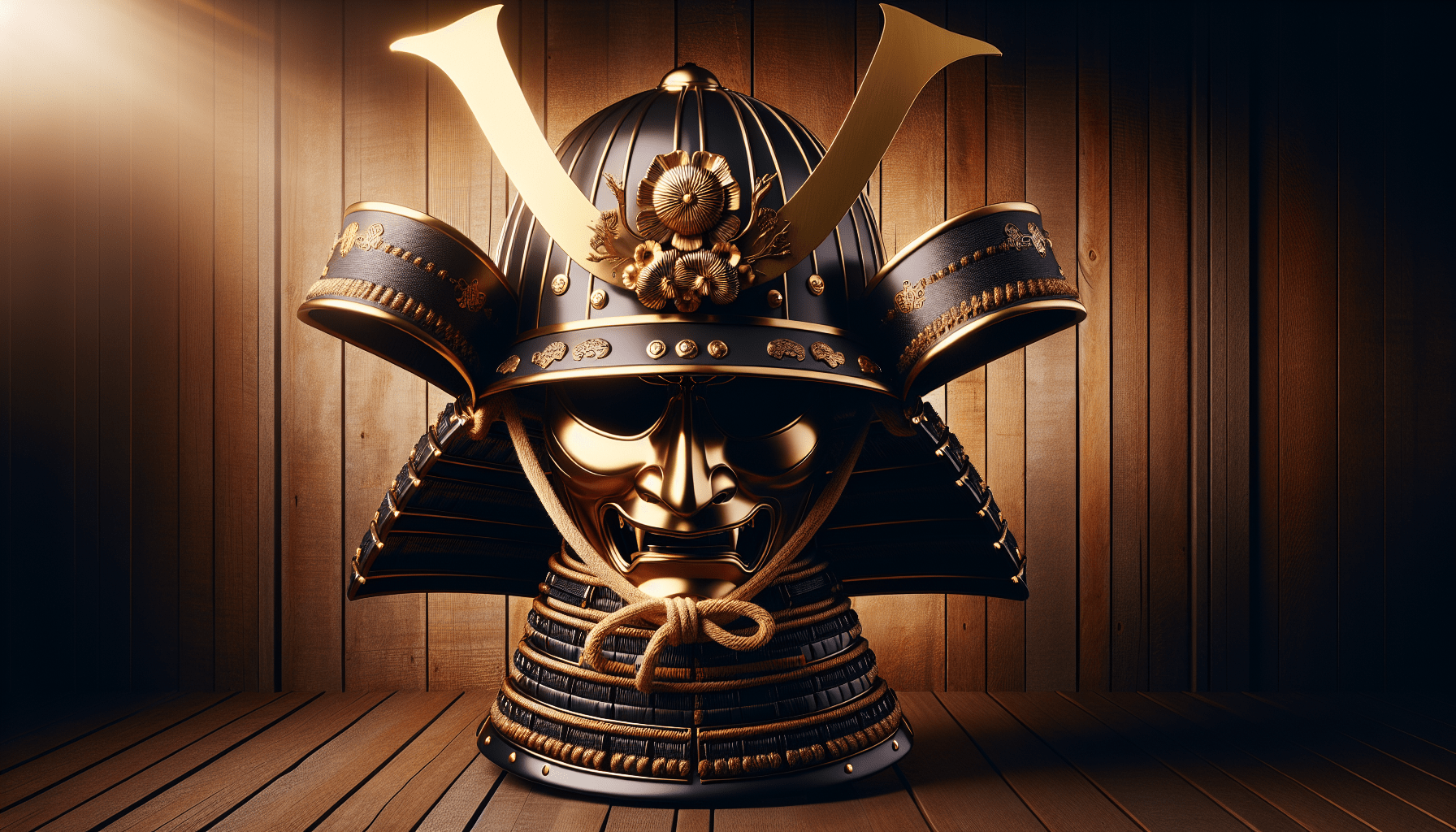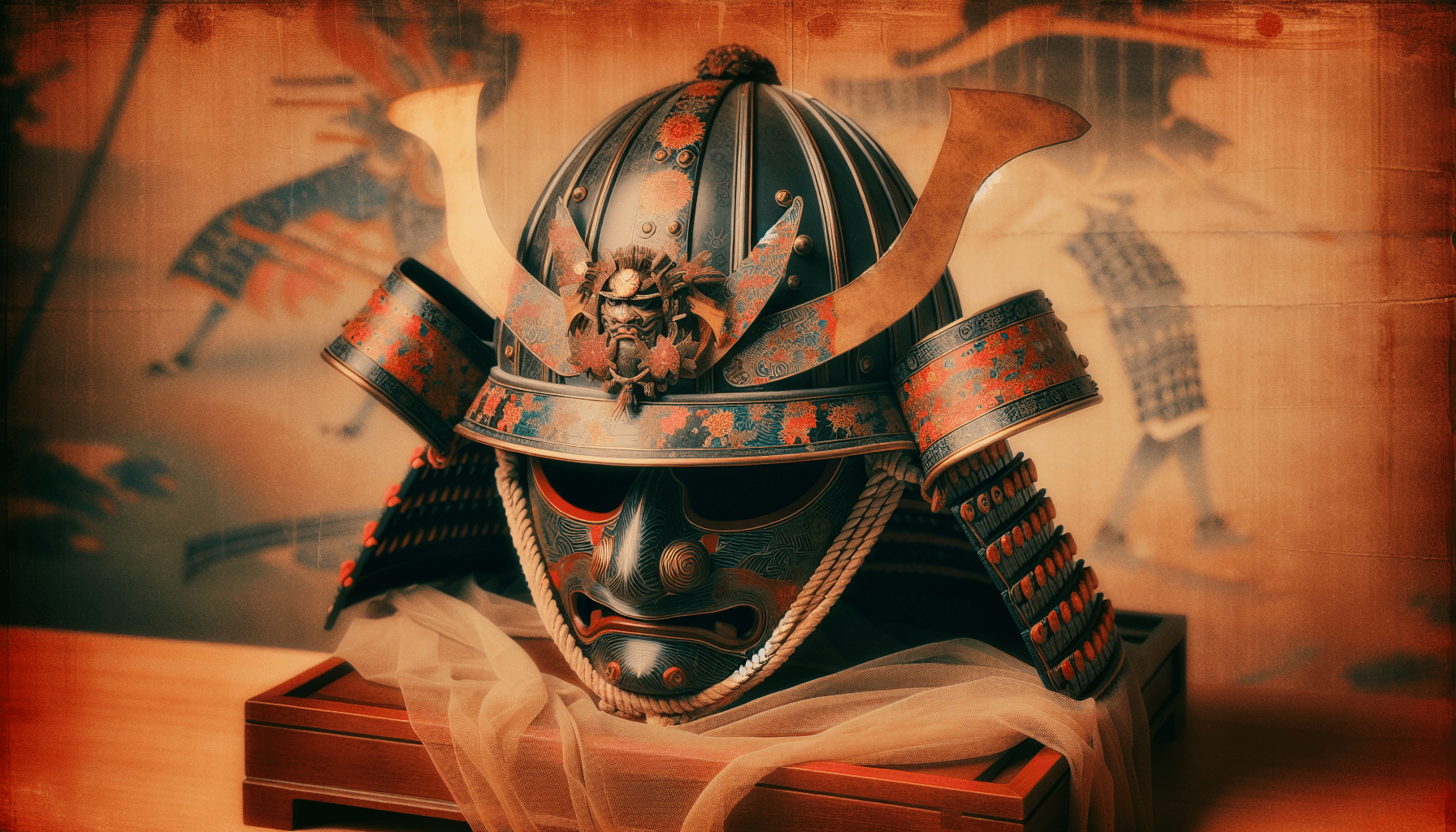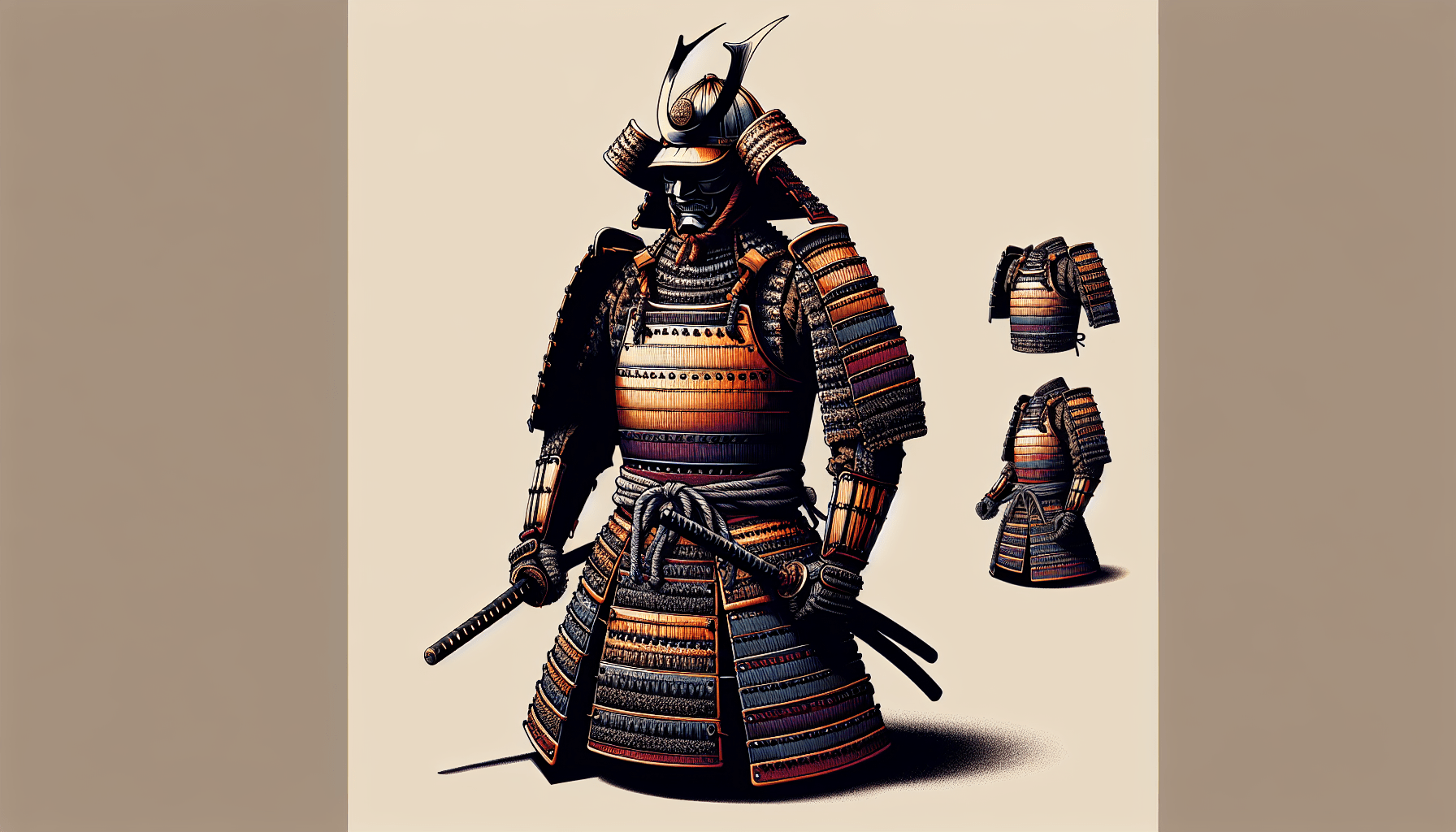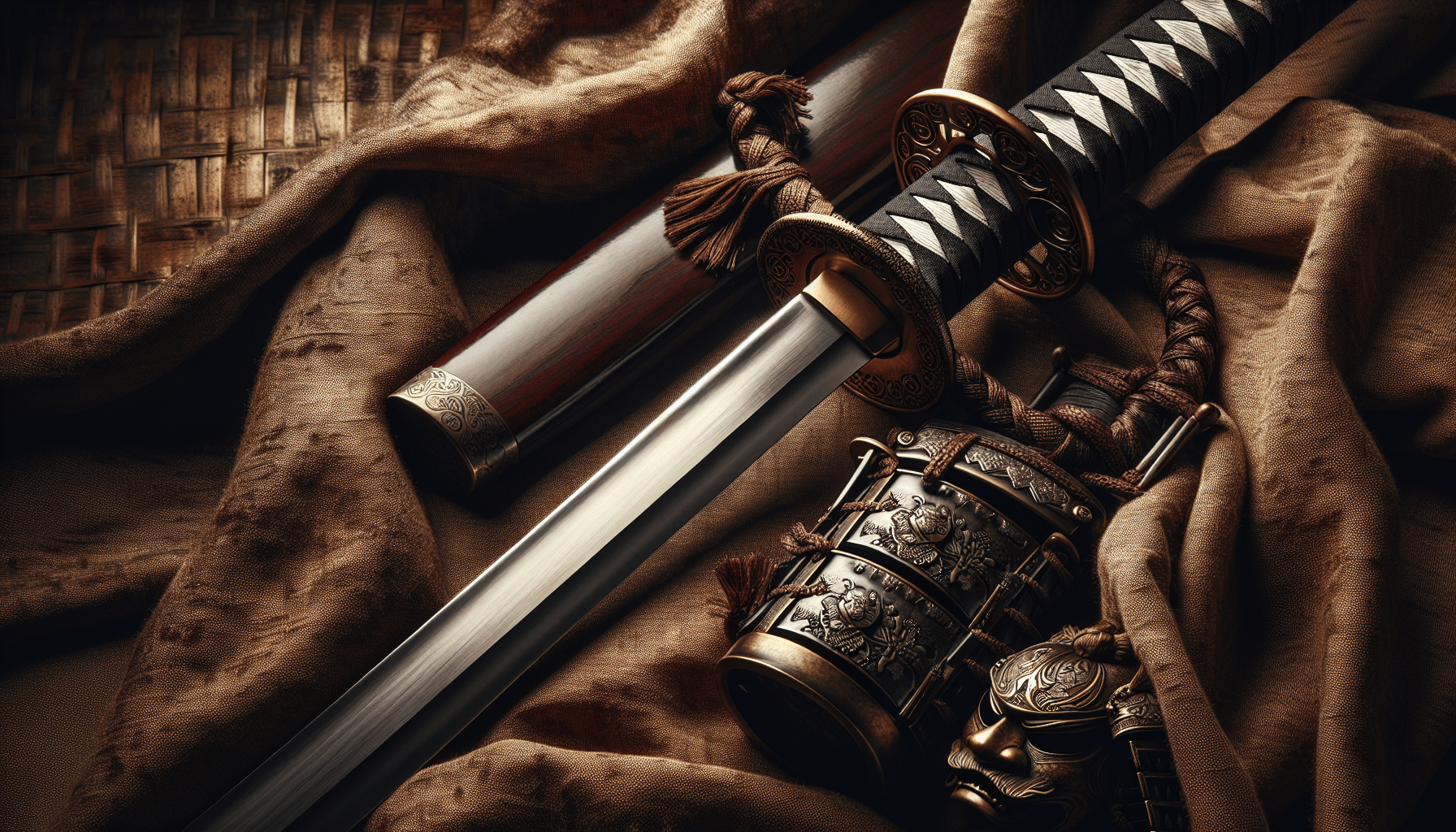
Ilya embarks on an exciting adventure as he crafts his very first Samurai helmet, drawing inspiration from the character Takeda in the popular game Naraka Bladepoint. This project showcases the process of creating intricate helmet parts from scratch, highlighting the dedication to historical accuracy and traditional techniques. Throughout the journey, you’ll discover how Ilya meticulously constructs a five-piece helmet, features a striking Mempo mask, and incorporates unique brass details, all while learning about the art of Japanese armor-making.
In addition to the craftsmanship, the video also invites you to connect with the creators and fellow enthusiasts through their social platforms. As Ilya reflects on his learning experience, there’s a warmth and accessibility that encourages viewers to engage and share their thoughts on future historical projects. Join in on this creative exploration of artistry, culture, and community!
Project Overview
Introduction to Ilya’s Samurai Helmet Journey
Embarking on a new and exciting venture, you are about to join Ilya Alekseyev on his quest to create his very first Samurai Helmet. This project is inspired by the character Takeda from the popular game, Naraka Bladepoint. The journey is not only about constructing a piece of armor but also about exploring the rich history behind the iconic Kabuto helmets worn by warriors in feudal Japan. With a passion for craftsmanship, Ilya shares his experiences, challenges, and triumphs, leading you through every stage of creating this impressive piece of historical armor.
Inspiration from Naraka Bladepoint
Your adventure into the world of Samurai helmets begins with a captivating inspiration drawn from the character Takeda in Naraka Bladepoint. This fighting game features not only unique characters but also stunning visuals that pay homage to a deep cultural heritage. Takeda’s design provides a striking framework for crafting a helmet that embodies both historical elements and the artistic flair of contemporary gaming. As you traverse through this project, you’ll discover how video games can ignite creativity and inspire artisans like Ilya to delve into historical craftsmanship.
Details of the Takeda Character
The character Takeda is a rich tapestry of history and fierce aesthetics, portraying a noble warrior in the game. With his distinctive attire and armor, Takeda embodies the samurai spirit—honor, courage, and skill. Each aspect of his design, from the bold colors to intricate shapes, serves as a guiding light for Ilya’s creation process. You’re invited to appreciate how these game elements transition from digital art to tangible craft, unfolding into the creation of a Samurai helmet that captures Takeda’s essence and the age-old traditions of Japanese armor design.
Helmet Parts
Five-piece Helmet Top Construction
The foundation of Ilya’s Samurai helmet lies in its meticulously crafted five-piece top. This structure includes a visor, central piece, two side plates, and a band that encircles the helmet. Each segment is handmade and thoughtfully shaped to create a cohesive and functional design. As you follow along, you’ll see how Ilya skillfully cuts, molds, and assembles these parts, allowing you to grasp the complexity and artistry involved in crafting a traditional Kabuto.
Design and Functionality of the Mempo Mask
A highlight of the helmet’s design is the fierce Mempo mask, which brings an intimidating presence to the overall creation. This mask is intricately made in two parts—a detachable nose piece and riveted tusks. This unique feature not only enhances the mask’s appearance but also serves a practical purpose, as it can be adjusted for better visibility or to provide additional facial protection. You’ll marvel at how traditional techniques meet functional design, allowing warriors to engage in battle while showcasing their individuality.
Incorporation of Neck Armor and Folds
Neck armor, while often overlooked, plays a vital role in Samurai helmets. Ilya pays special attention to the Shakura—the neck protection that features articulated folds. These folds are not just for aesthetic appeal; they also enhance mobility and comfort, allowing the wearer to move freely without sacrificing protection. As you explore this section, you’ll appreciate how every detail, no matter how small, contributes significantly to the functionality of the helmet.
Brass Detailing and Family Crest Attachment
To elevate the helmet’s intricacy, Ilya incorporates brass detailing along with a family crest, or Mon. This traditional touch is the result of careful hand-forging, particularly the Haraidate hook used to secure the crest onto the helmet. The choice of brass not only enhances the visual appeal but also reflects the allegiance and lineage of the wearer, serving as a reminder of their heritage and status. You will be inspired by how ancient techniques blend with personal artistry, culminating in a helmet that tells a story.
Sponsorship Details
Overview of the Sponsorship by Naraka Bladepoint
This ambitious project is made possible through sponsorship from Naraka Bladepoint, a game that celebrates competitive spirit and strategic fighting. The collaboration provides not only financial support but also increases visibility for Ilya’s journey. As a viewer, your engagement with this content helps to foster a community that appreciates the blend of culture, gaming, and craftsmanship.
Impact of Sponsorship on Project Visibility
Thanks to the sponsorship, Ilya’s Samurai helmet project receives a broader audience, inviting more viewers to witness the intricate process of armor-making. The partnership opens doors to engage with fans of the game, drawing attention to the historical significance of the helmet while creating connections through shared interests. You’ll see how the sponsorship amplifies the narrative, drawing more enthusiasts into the world of traditional craftsmanship and its role in modern storytelling.
Collaboration with Game Developers
The partnership with Naraka Bladepoint extends beyond mere sponsorship; it symbolizes a collaboration between artisans and game developers. This synergy encourages a dialogue about historical accuracy and artistic interpretation in video games. As you follow Ilya’s journey, it becomes clear how such collaborations can contribute to both cultural preservation and innovative design, encouraging you to consider how crafts and modern media can coalesce beautifully.
Creators and Team
Roles of Ilya Alekseyev and Matt Stagmer
At the core of this project are Ilya Alekseyev and Matt Stagmer, each bringing unique talents to the table. Ilya takes on the role of the main creator and craftsman, diving into the intricacies of helmet construction. Meanwhile, Matt serves as the producer and video editor—capturing every moment of the artistic process and turning it into an engaging visual narrative for you to enjoy. Together, their collaboration enriches the storytelling aspect, making the project’s progression exciting and relatable.
Collaboration Dynamics between Team Members
The teamwork between Ilya and Matt flows seamlessly, as they exchange ideas, techniques, and perspectives throughout this creative endeavor. You’ll notice how their collective energy and enthusiasm create a vibrant atmosphere, one that is conducive to learning and growth. The dynamic between them highlights the importance of collaboration in the creative process, showing how two distinct voices can harmonize to produce something exceptional.
Contributions of Support Staff
Behind the scenes, a team of supportive staff members aids in ensuring the project runs smoothly. From logistical support to administrative tasks, each contributor plays a vital role in amplifying Ilya and Matt’s vision. As you watch the project unfold, be reminded that great things are often the result of many hands working together, further emphasizing the community spirit that defines this journey.
Crafting Historical Armor
Emphasis on Kabuto Design Accuracy
Creating a Samurai helmet requires an unwavering commitment to accuracy, especially when aiming to replicate the iconic Kabuto design. Ilya dedicates himself to understanding the historical significance of every curve and detail in the helmet, ensuring that his creation remains true to its roots. As you follow along, you’ll gain insight into how historical accuracy is necessary for both authenticity and respect towards the culture this armor represents.
Historical Research and Study of Samurai Armor
Ilya’s journey is steeped in historical research, where he scrutinizes antique helmets to appreciate their artistry fully. You’ll learn about the distinct features of different eras and regions, enhancing your understanding of the evolution of Samurai armor. Each historical reference not only informs his design choices but also deepens your appreciation for the exquisite craftsmanship that has stood the test of time.
Understanding the Craftsmanship Techniques
The journey into creating Ilya’s Samurai helmet also involves a deep dive into traditional craftsmanship techniques. Methods handed down through generations are essential in reproducing these stunning pieces of art. As Ilya navigates through this complex world of skills and practices, you’ll notice how each technique contributes not just to the helmet’s aesthetics but also to its functionality and durability, ensuring it serves its purpose as protective armor.
Material Choice
Reasons for Using Mild Steel over Iron
One of the first decisions Ilya faces in this project is selecting the right materials. He chooses mild steel instead of traditional iron, recognizing its ease of workability and suitability for constructing the helmet. In this transition from historical to practical choices, you’ll discover the challenges modern artisans face while honoring ancient techniques.
Material Properties and Suitability for Armor
Mild steel is known for its malleability and resilience, making it an excellent choice for armor. While it might not have the same historical authenticity as iron, it provides a practical alternative that still embodies the spirit of Samurai craftsmanship. As you explore this section, you’ll come to appreciate the balance between historical accuracy and modern necessity, a common theme in craftsmanship today.
Comparative Analysis of Historical Materials
As Ilya reflects on the historical use of materials, he compares the characteristics of iron and modern steel to better understand their implications for armor creation. This comparative analysis broadens your knowledge of the materials historically utilized in armor-making while sparking curiosity about how different cultures approached armor construction based on available resources.
Helmet Structure
Component Breakdown of the Samurai Helmet
The structure of the Samurai helmet consists of several distinct components, each serving a vital function in the overall design. By breaking down the helmet into its parts—the visor, central piece, sides, and band—you’ll gain valuable insights into how ancient design principles still apply to modern interpretations. Understanding these components enriches your viewing experience and appreciation of the craft.
Practical Considerations for Helmet Usability
Creating a helmet that is not only visually stunning but also practical is key. Ilya’s careful attention to usability ensures that the helmet can be worn comfortably without compromising flexibility. As you observe this aspect of the project, you’ll realize the importance of function alongside form in historical armor, highlighting the intricate balance artisans must achieve.
Adjustments Made for Average Person’s Size
One of the unique challenges Ilya faces is adjusting the helmet’s size for a broader audience. By designing the helmet to fit an average person’s head, he ensures that it remains accessible to more individuals. This thoughtful consideration reflects a modern approach to historical craftsmanship, where inclusivity enhances the appreciation for traditional art forms.
Construction Techniques
Evolution of Japanese Helmet Design
The design of Japanese helmets—the Kabuto—has evolved significantly over the centuries. Ilya discusses how historical designs transitioned from solid metal pieces to a more intricate assembly of multiple parts. This evolution showcases the innovative spirit of Japanese armorers, aligning with your understanding of how necessity and practicality drive design changes over time.
Multiple Piece Construction Benefits
By utilizing a multi-piece construction method, the helmet not only becomes lighter but also offers improved comfort and resilience. You’ll appreciate how assembly techniques provide flexibility and allow for intricate designs that are adapted to the warrior’s needs. The benefits of a modular approach to armor construction resonate well with both modern and historical practices.
Traditional Techniques for Enhanced Durability
In the pursuit of durability, Ilya employs traditional crafting techniques that have been tested for generations. He highlights how these methods, such as the use of rivets and lacquer finishes, contribute to the longevity and strength of the armor. As you learn about these time-honored techniques, you’ll understand how history meets practicality in the creation of Samurai helmets.
Cultural Elements
Representation of Oni in Design
A captivating aspect of Ilya’s design is the representation of Oni—the mythical demons of Japanese folklore. These elements symbolize bravery and protection, reflecting both cultural beliefs and artistic expression. As you learn about their significance, you’ll appreciate how they add depth to the helmet, connecting you to the storytelling traditions of Japan.
Incorporation of Japanese Mythology into Craft
The infusion of mythology into Ilya’s helmet design not only enhances its beauty but also roots it in cultural significance. Elements inspired by Japanese legends breathe life into the armor, creating a narrative that transcends time. As you explore this dimension, you’ll discover how storytelling through craft can foster connections to one’s heritage.
Symbolism of Family Crest and Brass Accents
The family crest (Mon) affixed to the helmet is a powerful symbol of lineage and identity. The detailed brass accents not only elevate the visual appeal but also signify the wearer’s heritage, grounding the helmet in a personal story. Through this connection, you are encouraged to reflect on your own familial narratives and the significance they hold in your life.
Conclusion
Summary of Ilya’s Samurai Helmet Journey
Ilya’s journey in creating his first Samurai helmet is a multifaceted exploration of artistry, history, and craftsmanship. Through the thoughtful design inspired by Takeda from Naraka Bladepoint, you’ve witnessed the process of transforming raw materials into a finished helmet while learning about the intricacies involved in traditional armor-making.
Reflections on Craftsmanship and Learning
As you reflect on Ilya’s craftsmanship, you recognize the learning process highlighted throughout the journey. Each challenge faced and decision made enriches the overall experience and serves as a testament to the growth that can occur through hands-on work. You’ll find inspiration in the dedication and passion exhibited in every aspect of the project.
Looking Forward to Future Projects
With Ilya’s journey nearing its end, the excitement doesn’t have to stop here! You are encouraged to look forward to future projects that blend history and modern design. Ilya expresses his eagerness to tackle new historical creations, inviting your suggestions and ideas. Together, you can engage with the community and continue to explore the fascinating world of historical craftsmanship—after all, every piece tells a story waiting to be crafted.







